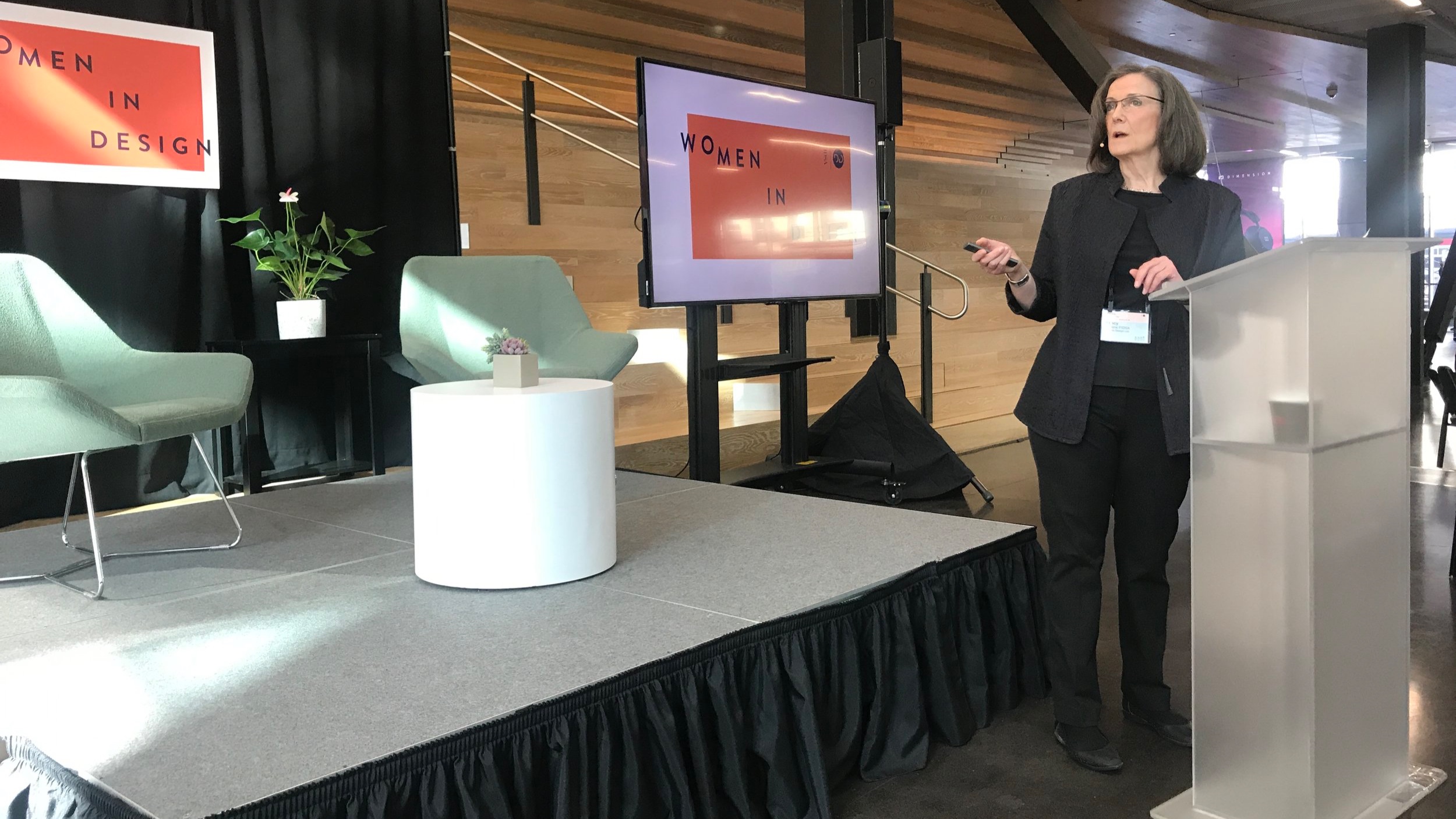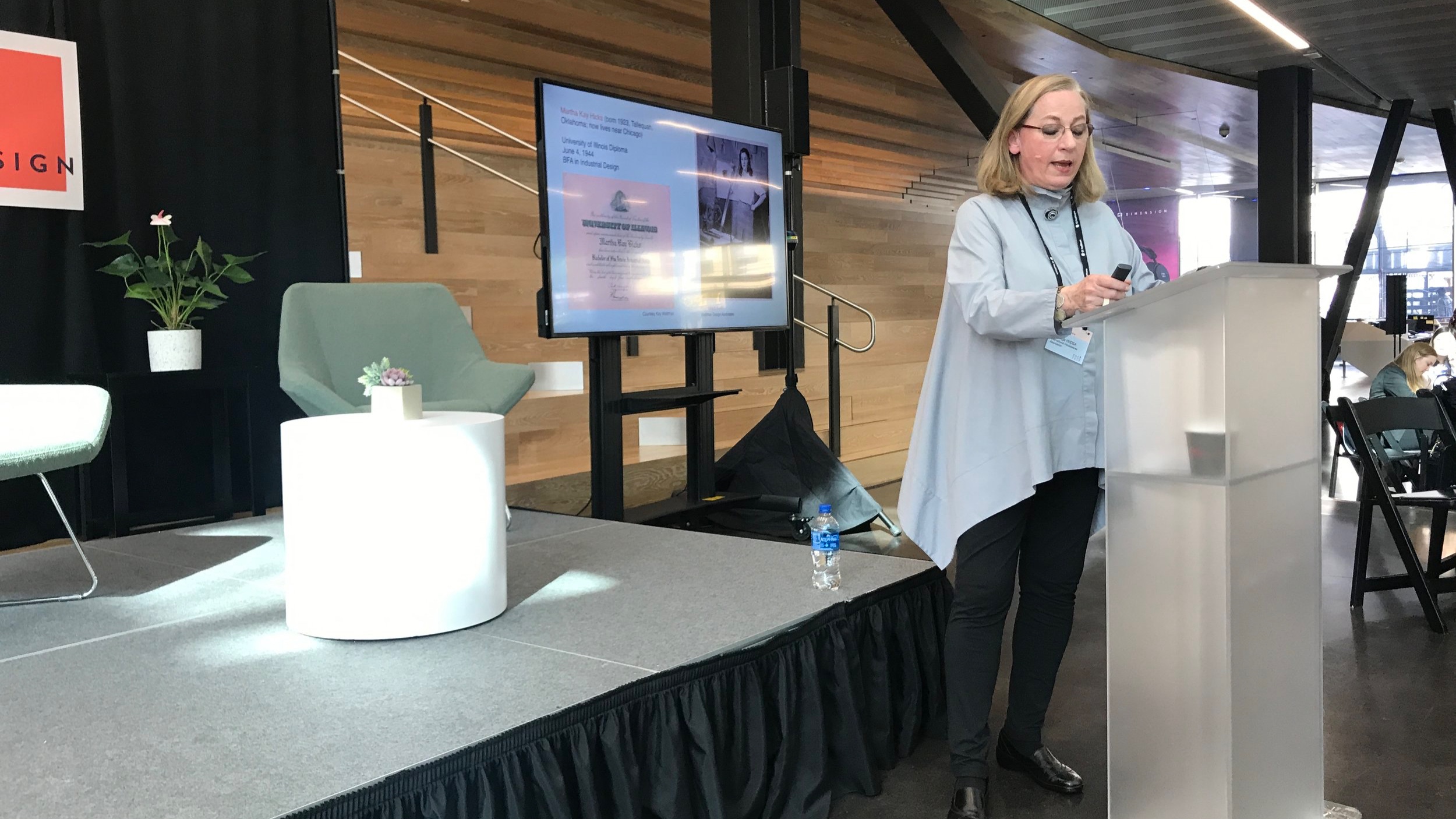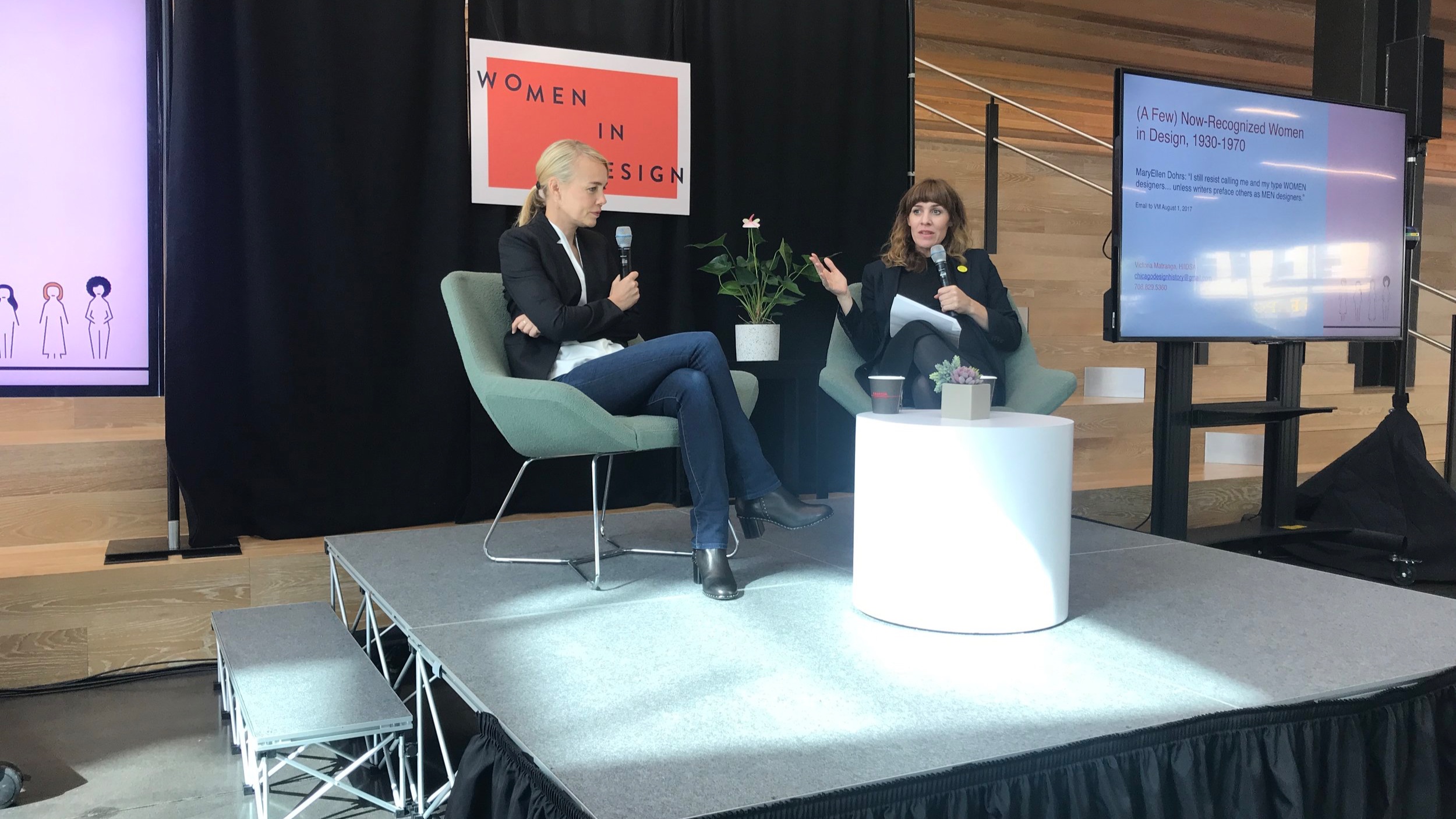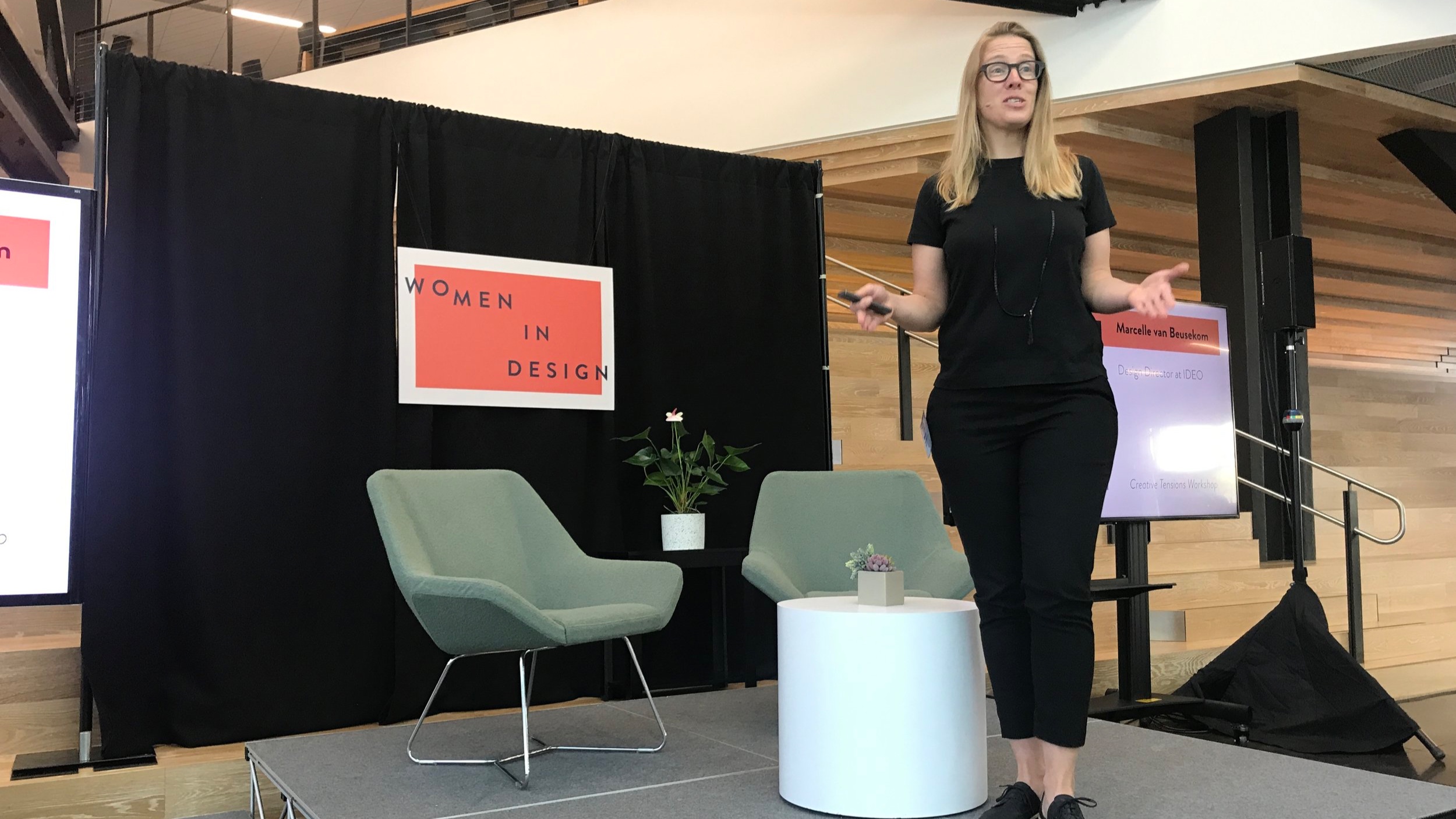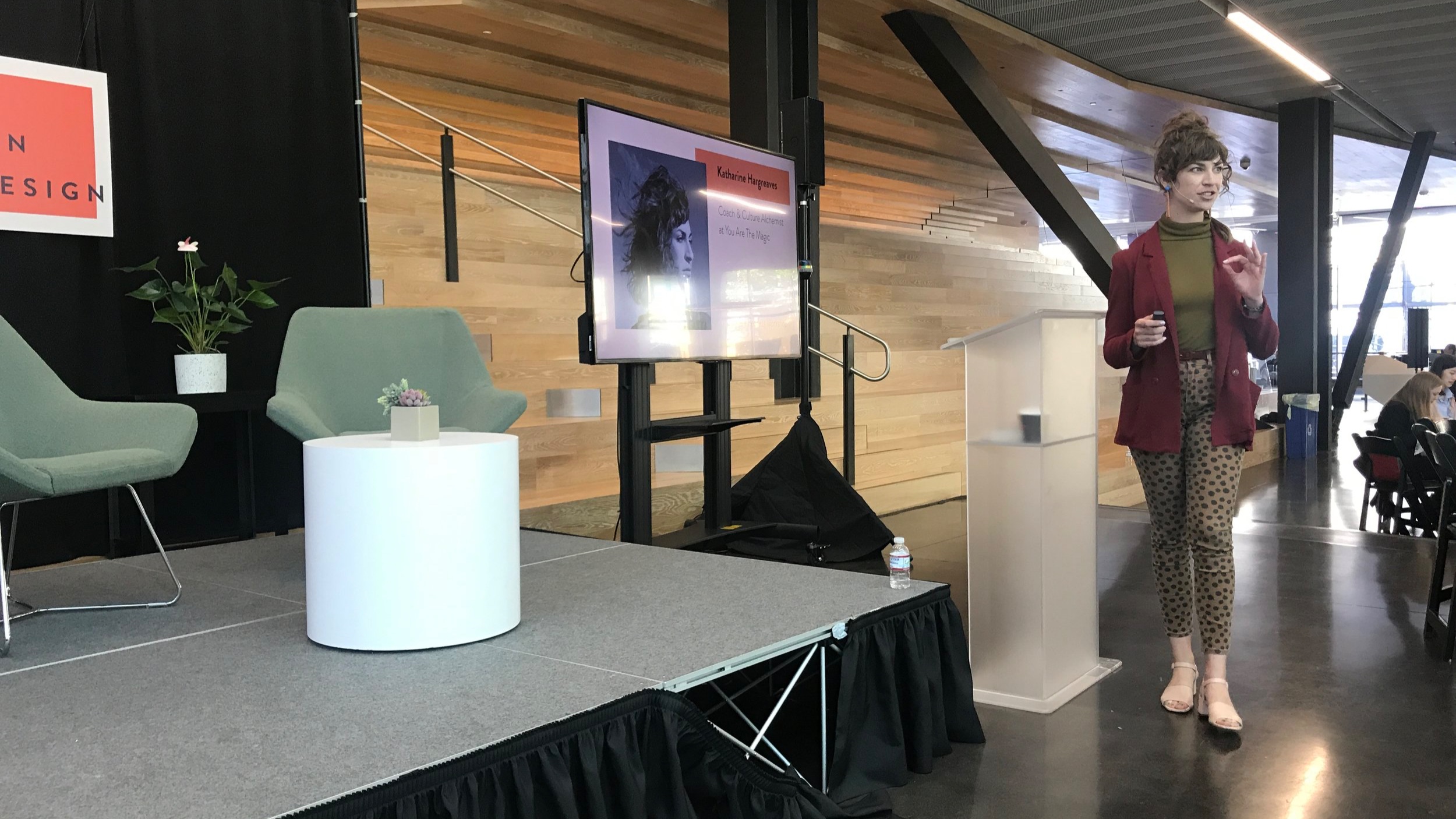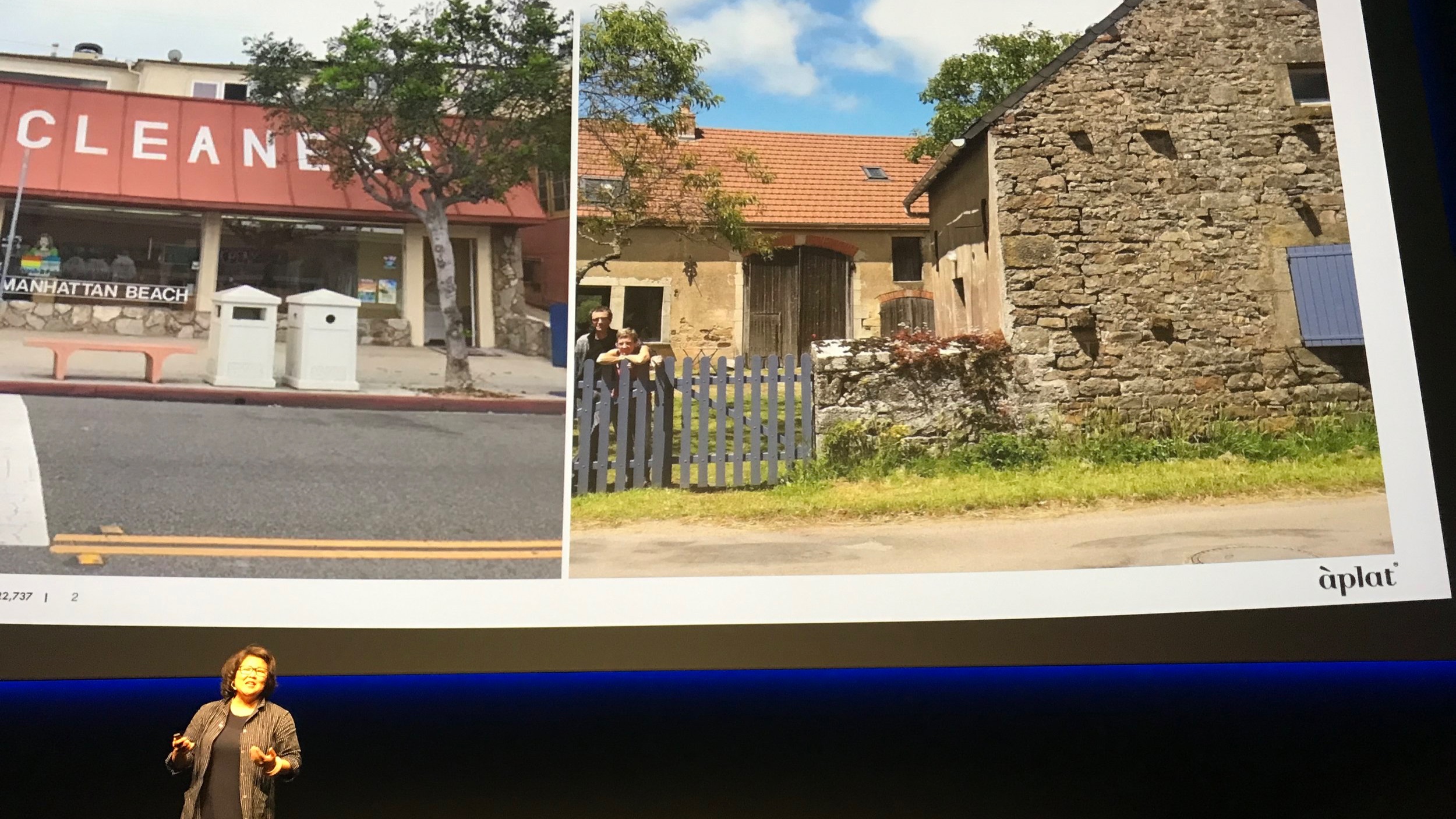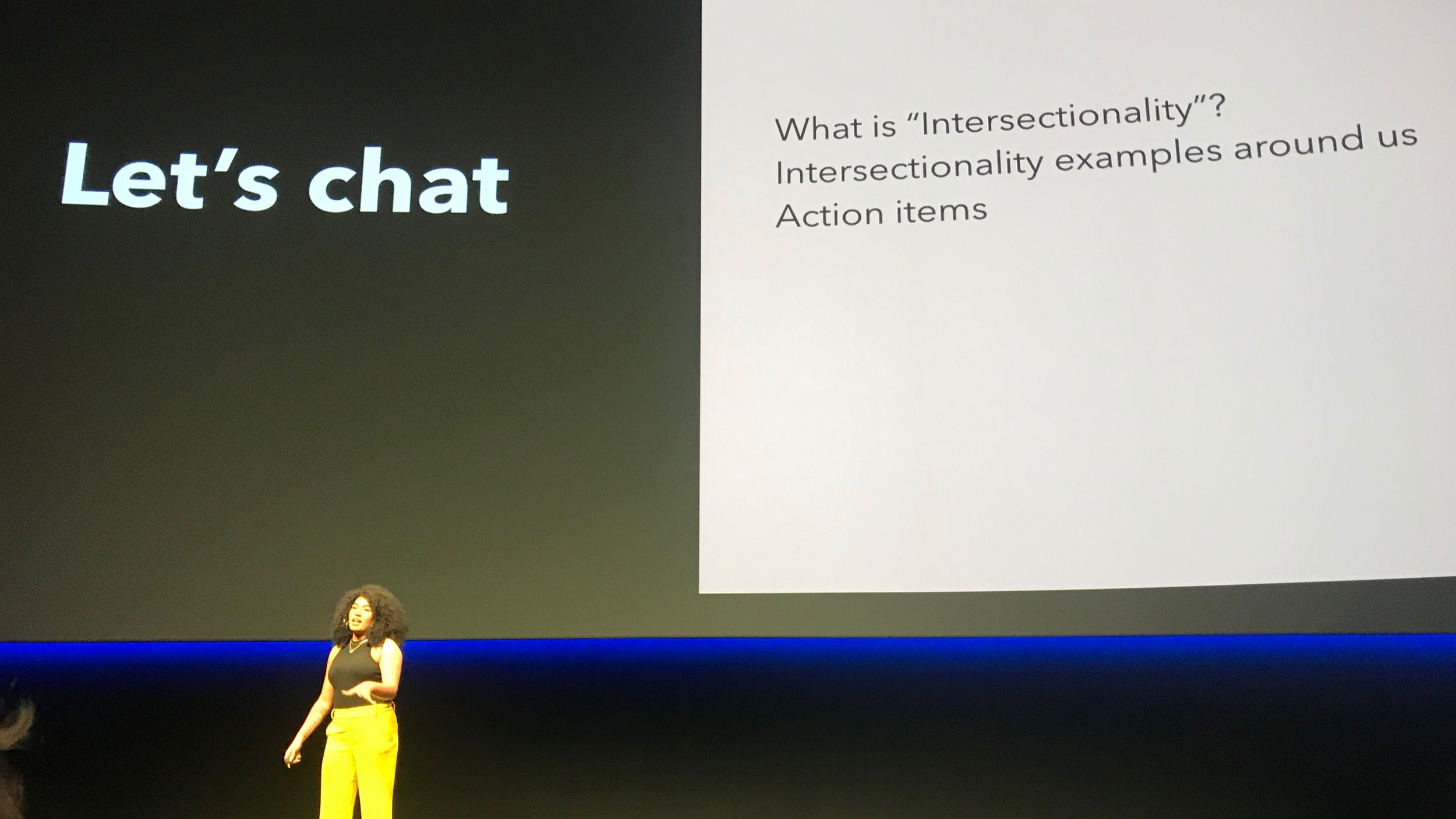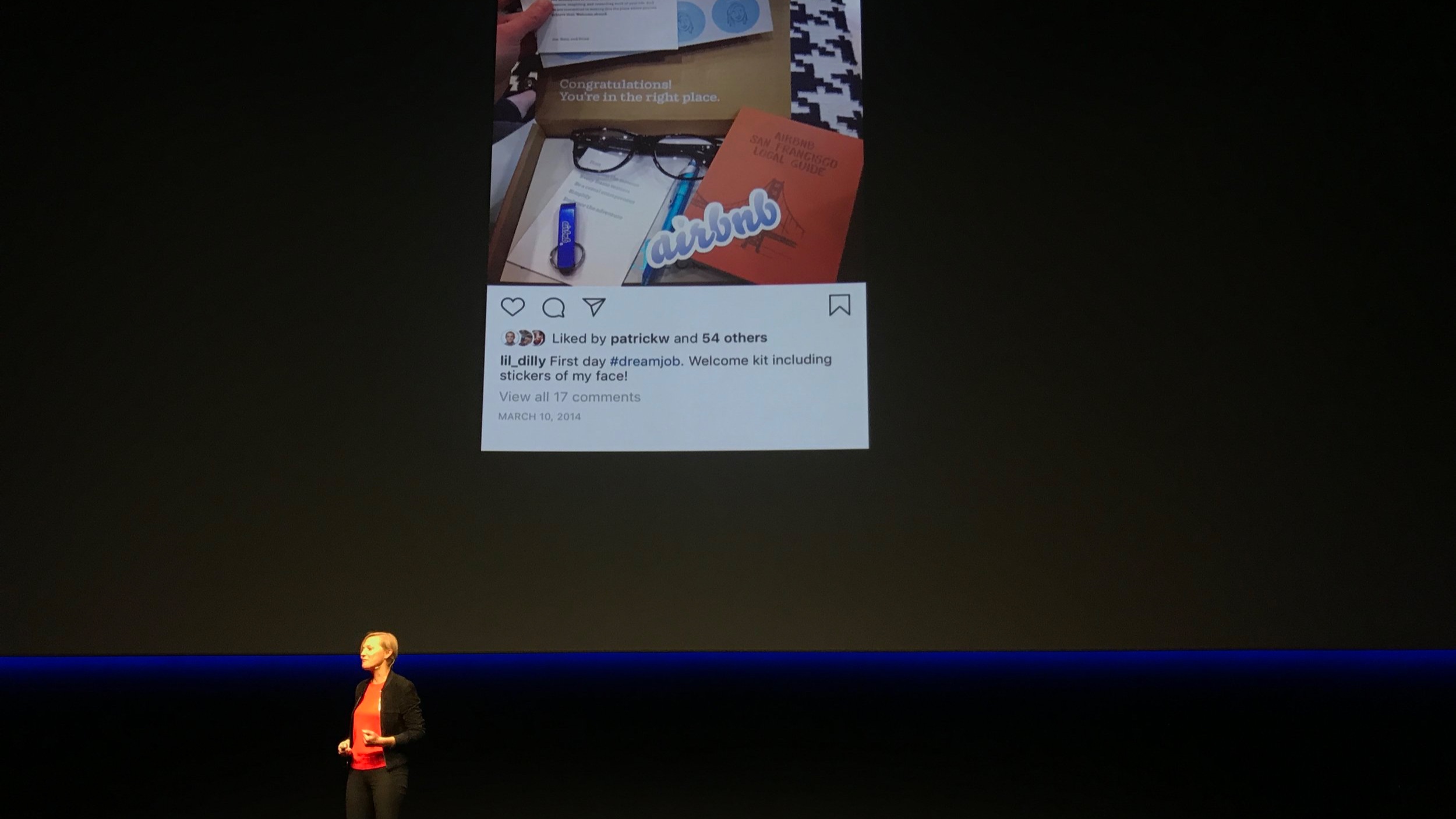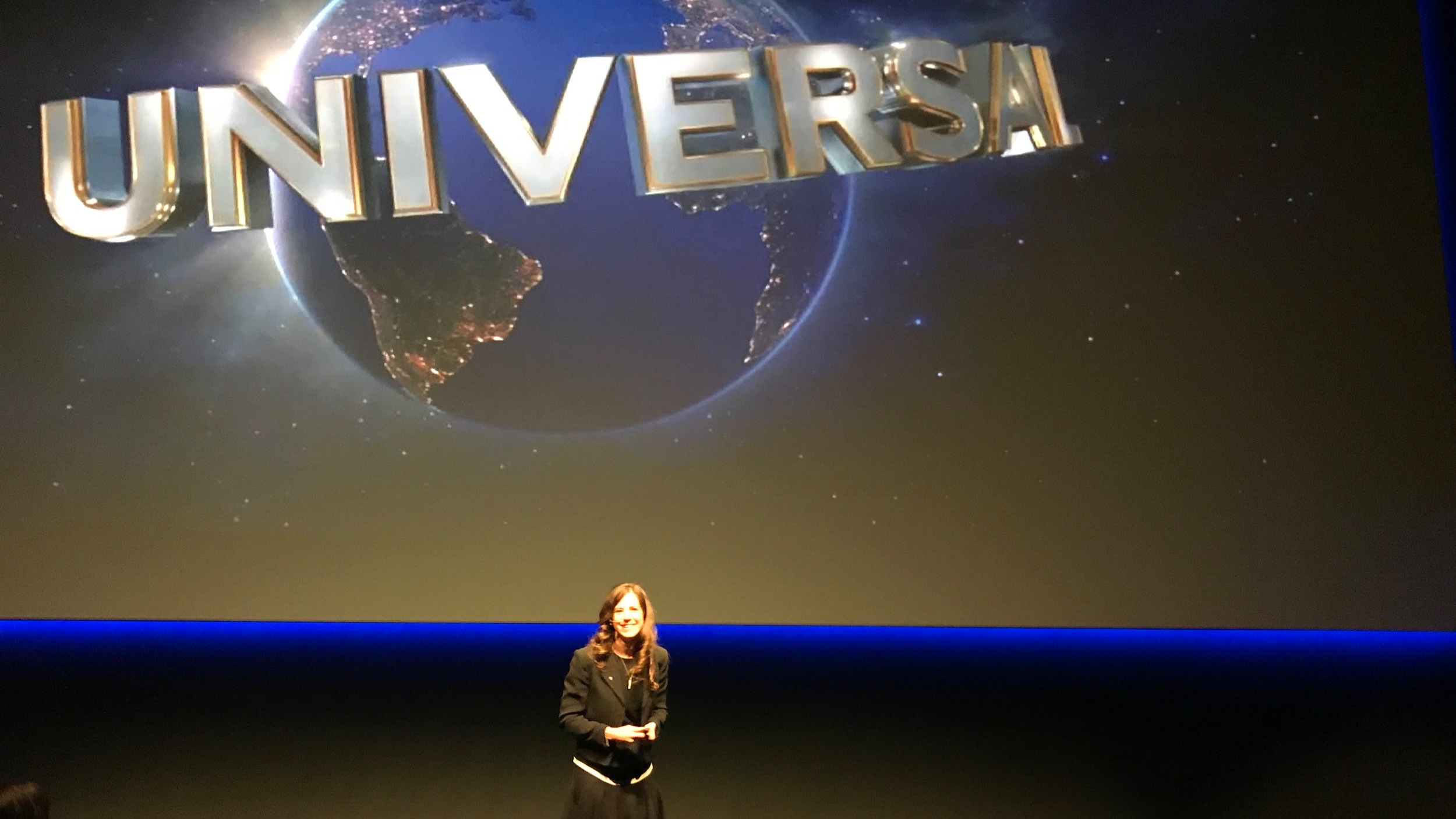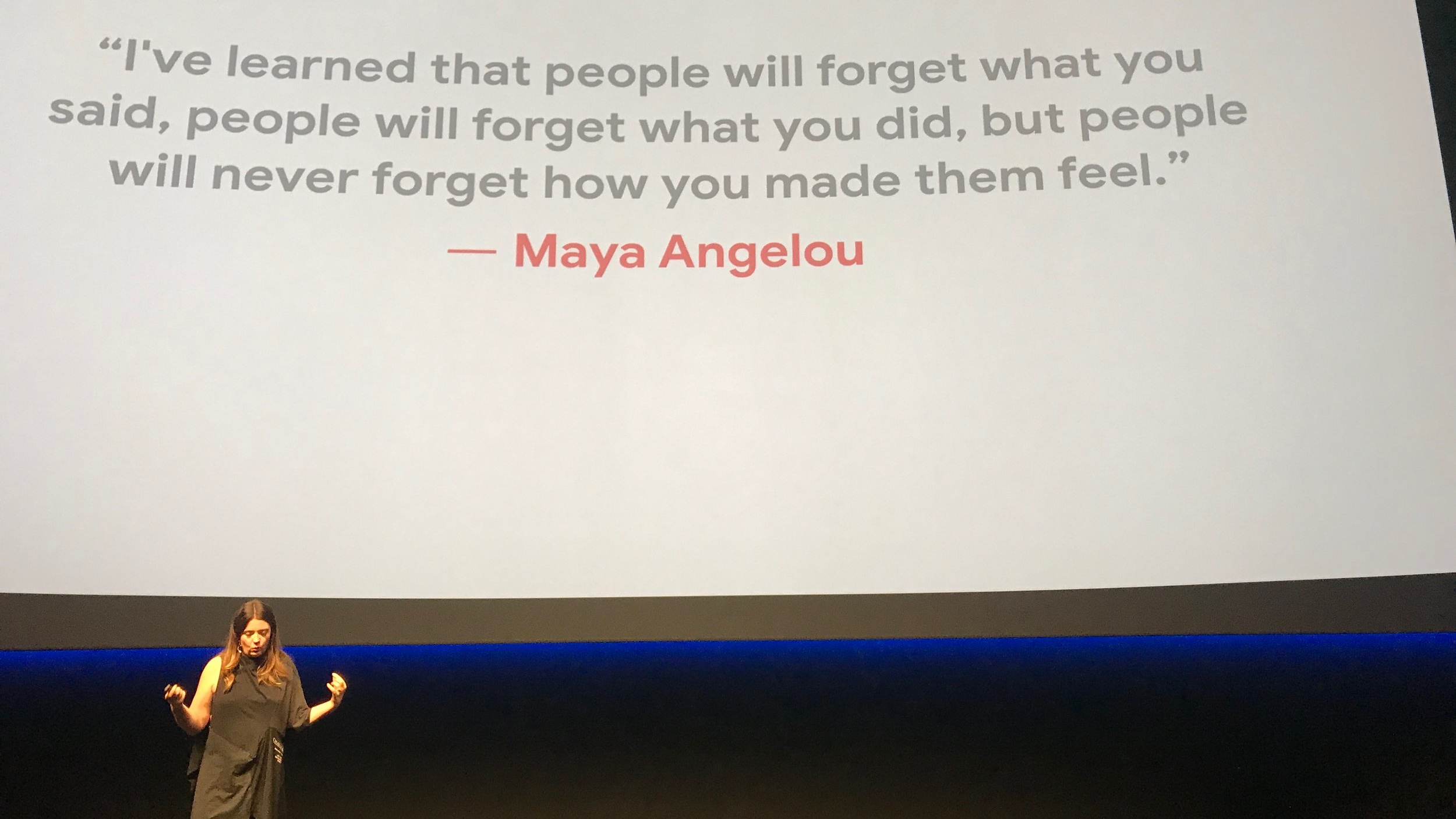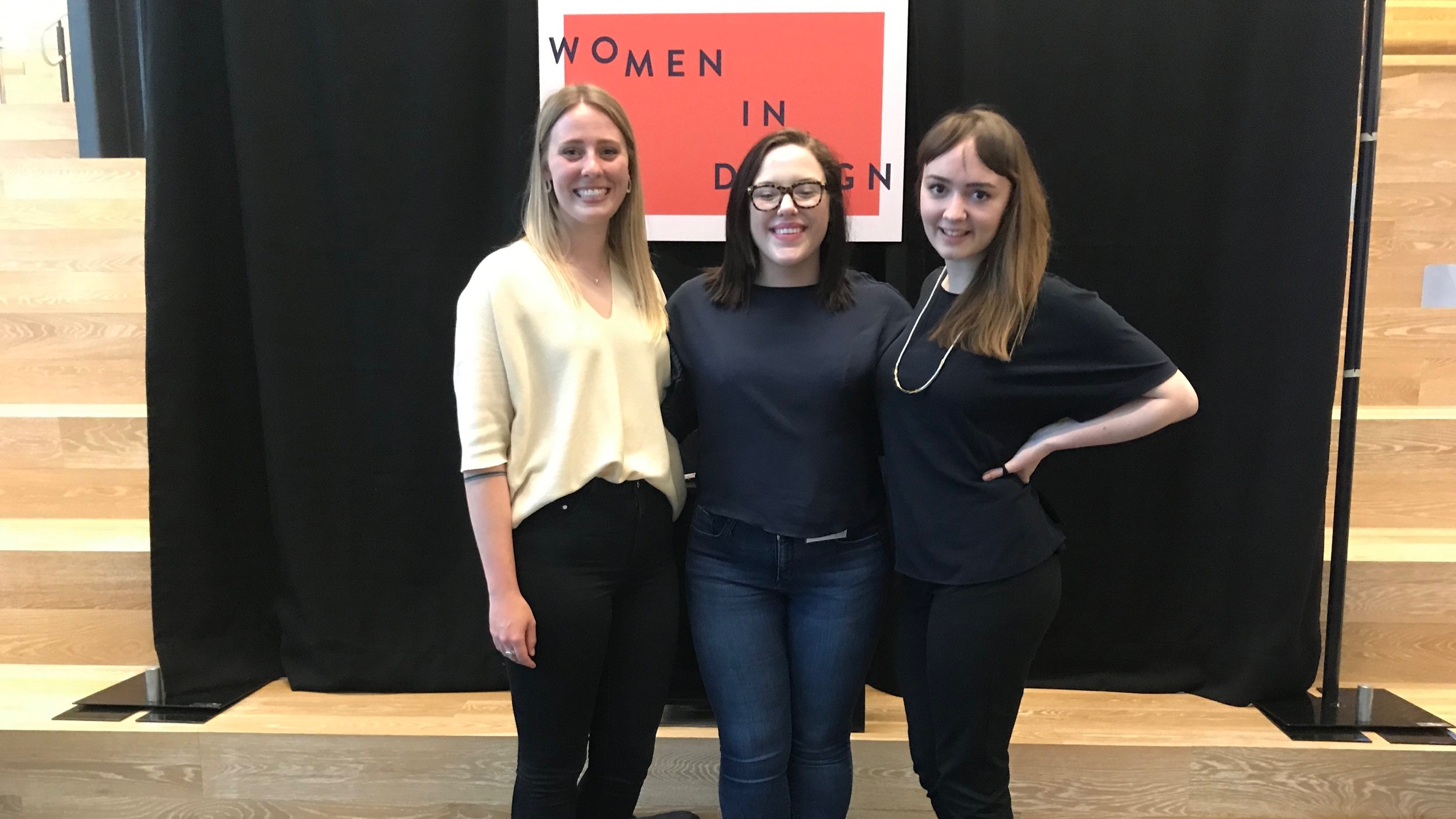Women in Design Conference 2019 Recap
Our reflection of the Spring 2019 Women In Design Deep Dive by the Industrial Designers Society of America.
On Friday, May 3rd, we had the opportunity to attend IDSA’s third Women in Design Conference in San Francisco, California, at the Dolby Laboratories. The day was a celebration of women in industrial design and featured conversations, talks, and workshops from various women doing amazing things in the industry. Speakers included Nancy Perkins, Vicki Matranga, Victoria Slaker, Suzanne LeBarre, Marcelle van Beusekom, Katharine Hargreaves, Shujan Bertrand, Laura Silva, Katie Dill, Poppy Crum, and Isabelle Olsson.
The day kicked off with a reflection on our progress with Nancy Perkins, followed by many amazing women.
Nancy Perkins co-founded IDSA’s first special interest section, the Women’s Section, in 1991. She has an extensive and impressive career; she was featured in an ID Magazine article, “Against the Odds,” in 1986 alongside four other women, including Ray Eames, for being one of the first female industrial designers making a name for herself in our industry. Nancy has not only had a very successful career herself but has also mentored many other women throughout their careers. When many of her female mentees wanted to leave the profession, she simply said: “If you quit, then they won. So don’t do that.”
The second speaker of the day was Vicki Matranga, a Chicago-based historian of industrial design, the Design Programs Coordinator for IHA, and a good friend of WIID Chicago. Her talk focused on a few unrecognized women in industrial design from 1930-1970, including Anne Swainson, Margaret McCauley, Mary Ellen Dohrs, and many more. She wrapped up her presentation with a quote from Mary Ellen Dohrs: “I still resist calling me and my type women designers… unless writers preface others as men designers.”
Next, we heard from Victoria Slaker, VP of Product Design at Ammunition, as she was interviewed by Suzanne LeBarre, Editor of Fast Company’s Co. Design. The women discussed Victoria’s process of founding her California-based studio and how the firm has helped many startups, like Beats and Square, get their products off the ground. Victoria discussed her leadership strategy as VP, sharing that she gives her designers a lot of freedom and space to sit with problems rather than standing over their shoulders, which often undermines their confidence. One of her goals for women in industrial design is to help them self-promote and learn how to toot their own horns rather than shy away from receiving credit for their work.
A quick coffee break and two wonderful workshops with Marcelle van Beusekom and Katharine Hargreaves.
After a quick coffee break, everyone returned for a workshop with Marcelle van Beusekom, Design Director at IDEO. Marcelle shared with the audience some of the conversation strategies they use at IDEO to help their clients reframe problems and get everyone on the same page. One of those techniques was called Creative Tensions, an activity Marcelle lead us through which involved reacting to two contradicting statements. There was a line drawn down the center of space and when the statements were presented, attendees were told to stand on whatever side they best aligned with. The choices included everything from “coffee vs. tea” to “intention vs. chance.” After each choice, a few women were asked to share their rationale for choosing the side that they did, giving us insight into other experiences.
Marcelle’s workshop was followed by a workshop from Katharine Hargreaves, Coach + Culture Alchemist at You are the Magic. While Marcelle’s workshop focused on the opening conversation between attendees, Kat took us through an exercise that dove deep into recognizing personal and professional struggles and taking intentional steps towards achieving our goals. The exercises began with everyone imagining where and who they wanted to be in a year, and then distilled that down into goals to help us all achieve our happy place and find our magic. Her workshop left us with the takeaway that fearlessness is not a character trait, it is a choice.
After lunch, we were ushered into the Dolby Cinema, the most advanced cinema experience in the world.
After seeing and hearing a demonstration of the amazing space (let’s just say, WOW), the presentations kicked back off with a presentation from Shujan Bertrand, the founder, and industrial designer at Aplat Inc. She spoke of her journey since founding her company four years ago, particularly the struggle to create a zero-waste product and manufacture all her products locally. Inspired by her immigrant parents and her husband’s French heritage, Shu strives to create designs that are both beautifully made and kind to the environment. She uses the golden ratio rectangle as a basis for the designs, thinking of her use of fabric in a similar way. She works with multiple factories in the Bay Area to manufacture her bags out of cotton and denim that have been discarded by large fashion brands. If you’re still looking for a Mother’s Day gift this year, we highly recommend checking out her site!
The next speaker was Laura Silva, the VP of Accessibility UX Design at Bank of America. As an Afro-Latinx woman from Colombia, Laura’s talk focused on the importance of intersectionality in design, starting the conversation by refuting the idea that inclusivity is a menace to productivity. Her advice to the audience is to “be inclusively disruptive” by breaking habits and telling new stories, involving customers sooner, taking a customer-specific focus, listening and investing rather than making assumptions, and hiring and promoting diverse talent. She touches on the business benefits of diversifying and gathering diverse quantitative data, stating that the people who sit at the table making decisions should reflect the people using the product. As the end of her presentation, Laura was asked how white women could be better allies to our peers of color. Her advice: listen and step back. She tells us to use our privilege and our platform, and then hand over the microphone and let people of color tell their own stories.
The day continued with a presentation from Katie Dill, VP of Design at Lyft. Katie spoke of her experience as a design manager at many companies, including AirBnb and now Lyft. She begins by sharing an experience when she first started at AirBnb. She started strong, implementing changes to the team immediately, but it soon backfired when three weeks later, her team called a meeting to tell her all the things she had been doing wrong. Because she had come out swinging, rather than listening, her team had begun to turn against her in just a few weeks. One of the biggest lessons she’s learned as a design manager? Speak the language of your team. She shared her professional take on the five love languages, changing the name to the five recognition languages. They are: encouraging words, focused time, tangible rewards, greater autonomy, and visible impact.
Our second to the last talk of the day was from Poppy Crum, Chief Scientist at Dolby Laboratories. Although not a designer herself, she talked about neuroscience as is applied to design and the research they have been doing at Dolby to better understand how external factors inherently affect biological factors outside of our control.
The last presentation of the day was from Isabelle Olsson, Design Director of Home and Wearables at Google. Isabelle took us through Google’s process to design products like the Google Home Mini and the Google Home Hub. When Google was designing their home and hardware products, they wanted to take them away from black boxes with blue lights, transforming them into something quiet, soft, and natural in your home. In order to align the design and engineering teams, they used the analogy of snow. They imagined the experience of walking through a busy city at night, with all the lights and sounds, and then waking up the next morning to find everything covered in a blanket of snow, soft and quiet. She shared her team’s process of turning that analogy into form language through prototyping and the careful process of color, material, and finish. One of her biggest takeaways was: “your brand isn’t what you say it is, it’s what they say it is.”
We are so thankful to have had the opportunity to attend yet another amazing Women in Design conference.
We met so many of the awesome women designing our future. Huge thanks to the Industrial Designers Society of America, IDSA, for putting this conference together and to all the speakers who shared such great insights with us.
